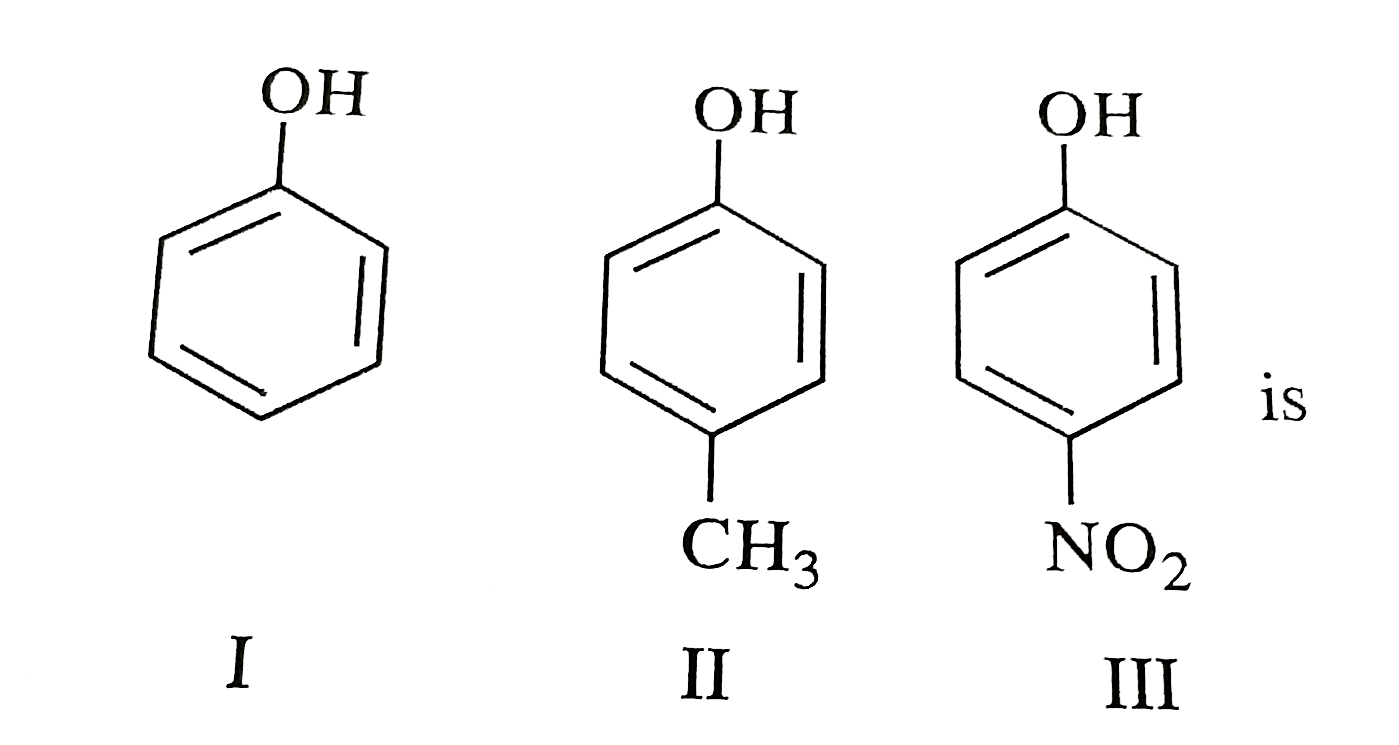The correct basic strength order of the following anions is:
CH3−ΘCH2>ΘNH2>CH2=ΘCH>CH≡ΘC>HΘO>ΘF
ΘNH2>CH3−ΘCH2>CH2=ΘCH>CH≡ΘC>ΘF>HΘO
CH3−ΘCH2>CH2=ΘCH>ΘNH2>CH≡ΘC>HΘO>ΘF
overset(Θ)(F) gt Hoverset(Θ)(O) gt CH-=overset(Θ)(C ) gt CH_(2)=overset(Θ)(C)H gt overset(Θ)(N)H_(2) gt CH_(3)-overset(Θ)(CH_(2))
The correct Answer is:C
To determine the correct basic strength order of the given anions, we need to analyze the stability of each anion. The less stable the anion, the stronger the base it will be, as it will more readily donate its electrons. Here’s a step-by-step breakdown of the reasoning:
Step 1: Identify the Anions
Let's assume the anions in question are:
1. F− (Fluoride)
2. OH− (Hydroxide)
3. CH−3 (Methyl anion)
4. NH−2 (Amide anion)
5. CH2=CH− (Vinyl anion)
Step 2: Analyze the Stability of Each Anion
1. Fluoride (F−):
- Highly electronegative, holds onto its electrons tightly.
- Stability: Very stable due to high electronegativity.
- Basic strength: Weak base.
2. Hydroxide (OH−):
- Less electronegative than fluoride but still holds onto the negative charge fairly well.
- Stability: Moderately stable.
- Basic strength: Moderate base.
3. Amide (NH−2):
- Nitrogen is less electronegative than oxygen.
- Stability: Less stable than hydroxide, can donate its electrons more readily.
- Basic strength: Stronger base than hydroxide.
4. Vinyl anion (CH2=CH−):
- SP2 hybridized, less stable than amide but more stable than methyl.
- Stability: Less stable than NH−2.
- Basic strength: Strong base.
5. Methyl anion (CH−3):
- SP3 hybridized, least electronegative, and least stable.
- Stability: Least stable, readily donates its electrons.
- Basic strength: Strongest base.
Step 3: Order the Basic Strengths
Based on the stability analysis:
- Weakest base: F− (most stable)
- Next: OH−
- Next: NH−2
- Next: CH2=CH−
- Strongest base: CH−3 (least stable)
Final Order of Basic Strength
The order of basic strength from weakest to strongest is:
F−<OH−<NH−2<CH2=CH−<CH−3
Conclusion
Thus, the correct basic strength order of the anions is:
- C part (assuming C part corresponds to the order derived).
Let's assume the anions in question are:
1. F− (Fluoride)
2. OH− (Hydroxide)
3. CH−3 (Methyl anion)
4. NH−2 (Amide anion)
5. CH2=CH− (Vinyl anion)
1. Fluoride (F−):
- Highly electronegative, holds onto its electrons tightly.
- Stability: Very stable due to high electronegativity.
- Basic strength: Weak base.
- Less electronegative than fluoride but still holds onto the negative charge fairly well.
- Stability: Moderately stable.
- Basic strength: Moderate base.
- Nitrogen is less electronegative than oxygen.
- Stability: Less stable than hydroxide, can donate its electrons more readily.
- Basic strength: Stronger base than hydroxide.
- SP2 hybridized, less stable than amide but more stable than methyl.
- Stability: Less stable than NH−2.
- Basic strength: Strong base.
- SP3 hybridized, least electronegative, and least stable.
- Stability: Least stable, readily donates its electrons.
- Basic strength: Strongest base.
Based on the stability analysis:
- Weakest base: F− (most stable)
- Next: OH−
- Next: NH−2
- Next: CH2=CH−
- Strongest base: CH−3 (least stable)
The order of basic strength from weakest to strongest is:
F−<OH−<NH−2<CH2=CH−<CH−3
Thus, the correct basic strength order of the anions is:
- C part (assuming C part corresponds to the order derived).
Topper's Solved these Questions
- SOME BASIC PRINCIPALS OF ORGANIC CHEMISTRYBOOK - A2ZCHAPTER - SOME BASIC PRINCIPALS OF ORGANIC CHEMISTRYEXERCISE - Bond Fission, Reagents, Reactive Intermediates And Their Stability
31 Videos
- SOME BASIC PRINCIPALS OF ORGANIC CHEMISTRYBOOK - A2ZCHAPTER - SOME BASIC PRINCIPALS OF ORGANIC CHEMISTRYEXERCISE - Structure Isomerism
28 Videos
- SOME BASIC PRINCIPALS OF ORGANIC CHEMISTRYBOOK - A2ZCHAPTER - SOME BASIC PRINCIPALS OF ORGANIC CHEMISTRYEXERCISE - Section D - Chapter End Test
60 Videos
- SOME BASIC CONCEPTS OF CHEMISTRYBOOK - A2ZCHAPTER - SOME BASIC CONCEPTS OF CHEMISTRYEXERCISE - Section D - Chapter End Test
30 Videos
- STATES OF MATTERBOOK - A2ZCHAPTER - STATES OF MATTEREXERCISE - Section D - Chapter End Test
30 Videos
Similar Questions
Knowledge Check
The correct basic strength order of following anions is:
ACH3−−CH2>−NH2>CH2=−CH>CH≡−C>H−O>−FB−NH2<CH3−−CH2>CH2=−CH>CH≡−C>−F>H−OCCH3−−CH2>CH2=−CH>−NH2>CH≡−C>H−O>−FD−F>H−O>Ch≡−C>CH2=−CH>−NH2>CH3−−CH2The correct acidic strength order of the following is :
 AI>II>IIIBIII>I>IICII>III>IDI>III>II
AI>II>IIIBIII>I>IICII>III>IDI>III>IICorrect basic strength order is :
 Ar>q>p>sBr>p>q>sCq>r>p>sDr>q>s>p
Ar>q>p>sBr>p>q>sCq>r>p>sDr>q>s>p
Identify correct basic strength order of following compounds:-

View SolutionThe correct order of acidic strength of the following is
View SolutionThe correct order of acidic strength of the following is
View SolutionThe correct order of acidic strength of the following is

View SolutionThe correct order of acidic strength of the following is

View Solution


